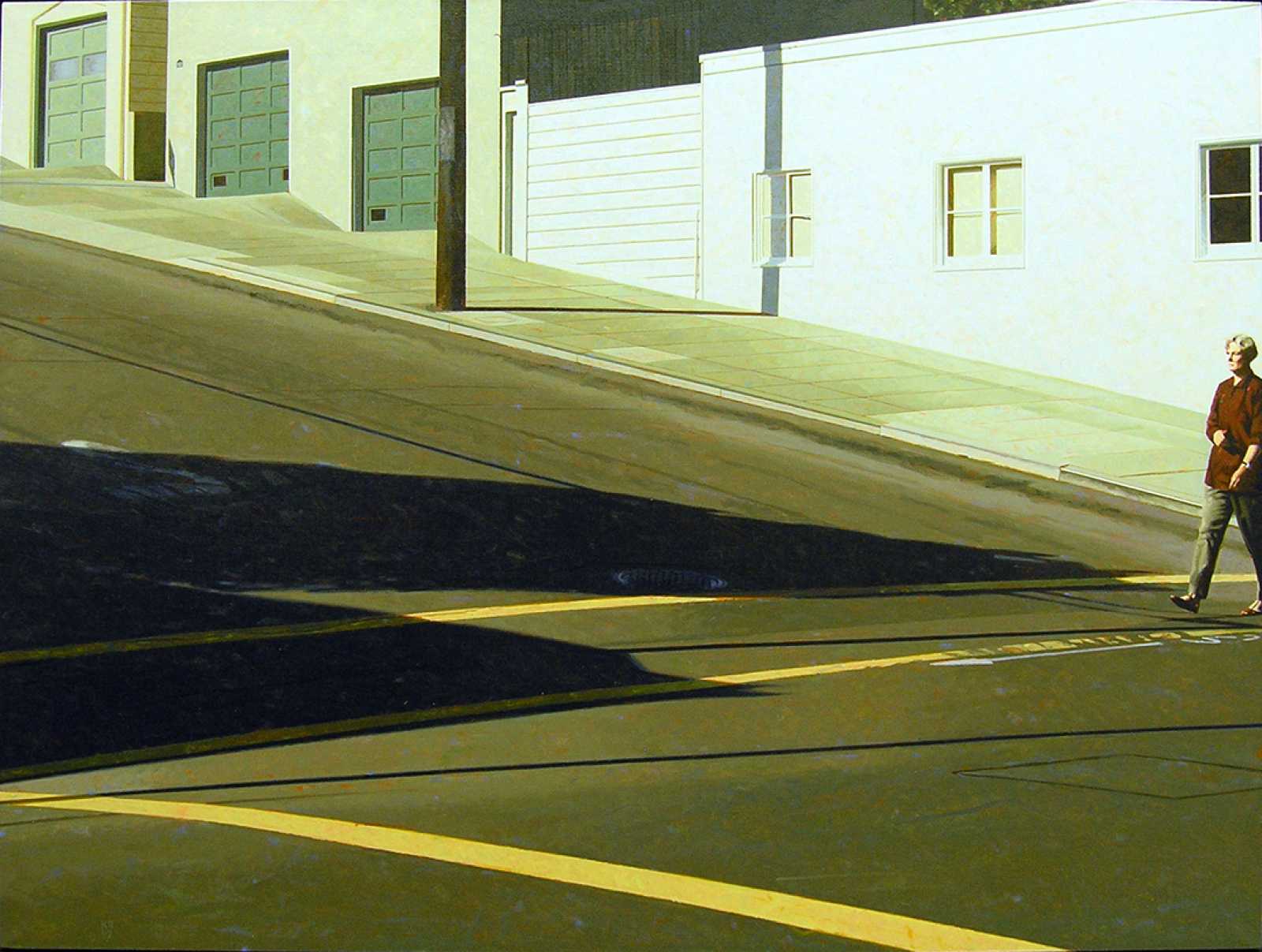Artwork of the Week
Robert Bechtle
Like other Photorealists who emerged in the late 1960s-70s, Robert Bechtle used photographs as a point of departure for his hyperrealist paintings. Similar to earlier Pop Artists, Photorealistic painters were inspired by the explosion of photography within popular visual culture and its rising status as fine art at the same time that they firmly embraced the importance of painting. To begin his creative process, Bechtle photographed local scenes, projected slides of his subjects onto canvases, and meticulously painted the forms, retaining the compositional framing of the original photograph.
Bechtle focused on things he knew best—the neighborhoods, cars, families, and ordinary scenes of middle-class American life. In Crossing Arkansas Street, he situates the viewer on the edge of the pavement at an intersection of two wide, nearly empty streets on Potrero Hill in San Francisco. Yellow crosswalk lines direct the viewer’s focus across the painting as the lone figure—the artist’s wife, Whitney Chadwick—enters the frame.
Born and raised in the San Francisco Bay Area, Bechtle received his BFA (1954) and MFA (1958) from California College of Arts and Crafts in Oakland. A tenured professor of art at San Francisco State University, he received numerous awards and honors during his career, including three National Endowment for the Arts grants and a Guggenheim Fellowship.
Robert Bechtle (American, 1932–2020), Crossing Arkansas Street, 1992, oil on linen, 36 x 48 inches. Museum purchase with funds provided by David Kaplan and Glenn Ostergaard, 110-2005.
Emma Camden
Emma Camden immigrated to New Zealand from England in the early 1990s after graduating from the University of Sunderland in the United Kingdom. Working exclusively in cast glass, Camden has pushed the boundaries of the medium to large-scale casting and carving, and has established herself as one of the country’s leading studio glass artists.
This sculpture investigates solid forms and ideas about structure and architecture. She has explored the pyramid structure and the Egyptian belief that the shafts of light within it allowed the soul to escape after death. Using simple abstract forms, Camden has carved an optic passageway—creating a separation of space—that allows the viewer to peer into and through the form.
Emma Camden (New Zealander, born 1966), Passage-Red Amber, 2007, cast and cold-worked glass. Gift of David Kaplan and Glenn Ostergaard, 2019.96a-c.


